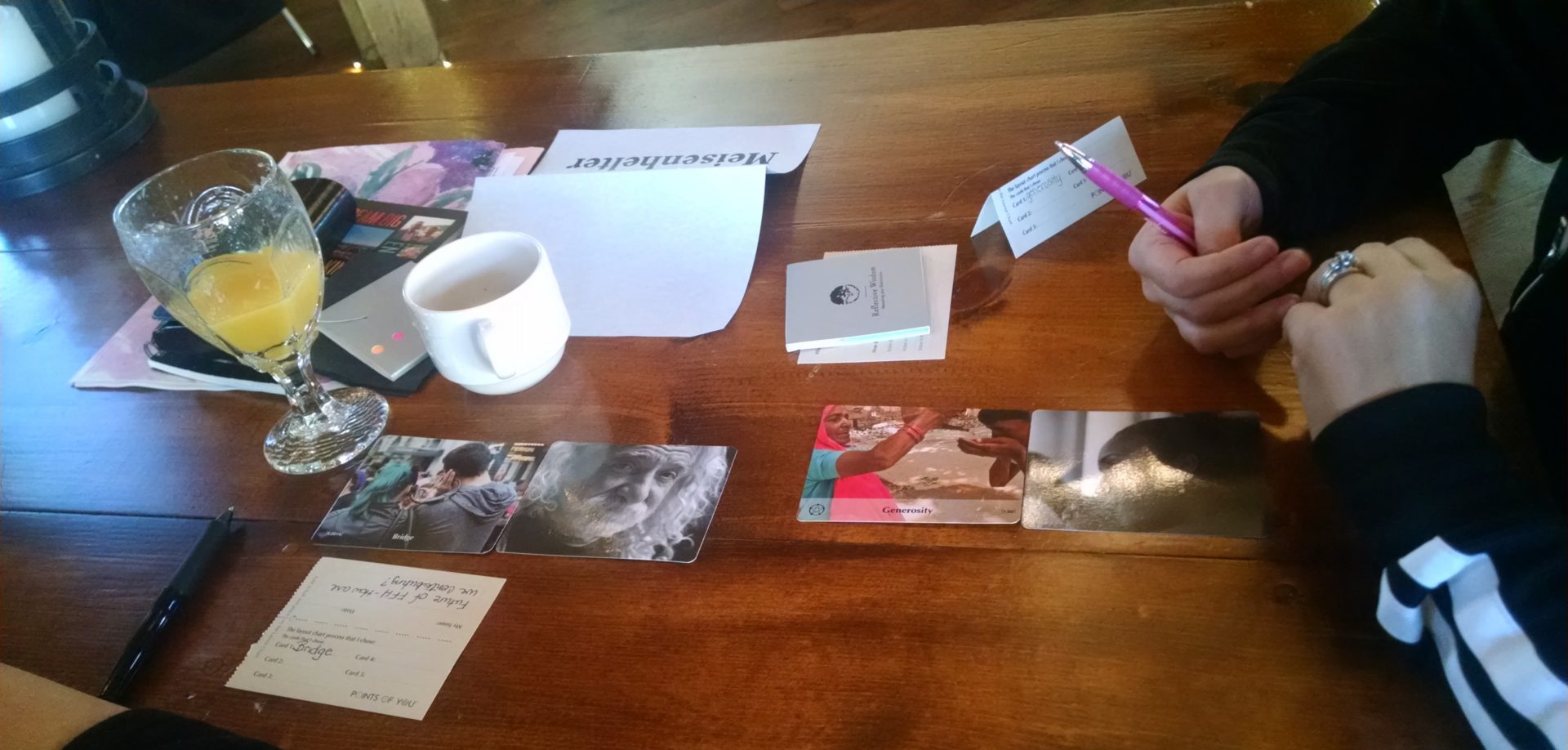
Now that I’ve gotten a hold of your attention about how the Points of You® approach can support emotional intelligence in teachers, you’re probably wondering how that can happen. You want a specific example of how this method really can engage teachers in developing their own social-emotional competencies. Well, keep reading and discover how Zooming In, a signature Points of You® encounter, can invite faculty to come together and connect more meaningfully.
So imagine it’s that time for your monthly faculty meeting. It’s been a long day already and you’re just hoping that the principal cancels the meeting all together. Instead, you receive a reminder email from her saying she can’t wait to share a special activity with all of you and posts this picture of something called The Coaching Game.

Once you and the rest of the faculty are gathered, you can tell right away that this is not going to be your typical faculty meeting where you’re being hosed down with a litany of directives. First, the room arrangement catches your eye. Chairs have been arranged in a circle and in the center, there are cards beautifully arranged.
Your school principal invites you to sit down and opens up, “Hi, I know that the last couple of months have been difficult at best. Thanks to all of you for taking on the extra responsibilities while I was away for Points of You® training (inserting training link). I realized that we’ve lost a bit of our spirit along the way and I want to share with you this process called Zooming In that I hope rekindles the reason why you love being a teacher.”
OK, now you’re really intrigued! The principal is about to lead you and the rest of your colleagues in a group experience with a set of picture picture cards. Even though you were complaining to yourself a moment ago, you can feel enthusiasm from your principal. You decided to suspend your judgment for a moment and partake in the Zooming In experience.
This is what happens.

Pause
Your principal acknowledges how busy you have been with completing parent-teacher conferences and the impending testing season. She wants you to step away from all that business by completing a Pause. “What's a pause?” You wonder to yourself. Sure enough, she explains Pause is a vital first step that creates space to relax and look at our situation from a distance allowing you to break the automatic thought patterns about this stressful time in the school year.
(Hers's a favorite song for Pause)

Setting the Stage
Once the music from Pause ends, the principal invites us to pick a card from the center of the circle. She says, “You have an opportunity to see things differently and to observe your automatic responses. Today you can look at your situation from as many points of view as possible.” Then she guides you through how to look at the image on the card and then has you notice the word at the bottom and guides you in connecting the word to the image.

Round 1: What is the Half Full Cup in Your Teacher Life?
With card in hand, she instructed us to find a partner and share with that person how the chosen card represents what is working well for you in your role as a teacher at this school. You and your partner have a wonderful time sharing the amazing moments in your classrooms so and are laughing joyfully together. The principal brings this interaction to an end and invites you to thank your partner and surprises you when she says, “OK. Now that you have switched your card, take your new card and find a new partner for the next round.”

Round 2: What is the Half Empty Cup in Your Teacher Life?
Once everyone is all settled with their new partner, the principal invites you to look at this new card that’s been gifted to you. She encourages you to put aside the initial story connected to this card and observe it from a new perspective, from your unique point of view. She says, “I would l like to remind you that this experience is all about breaking habits and changing perception so this card connects to those things that aren’t working for you as a teacher. It could be something you’d like to change, something that is causing conflict or a practice that isn’t serving you any more. What would you like to release in this moment?”
The principal brings second round to an end and invites us to thanks our partner and surprises you yet again when she says, “OK. Switch your card again, take your new card and find a new partner for the final round. You’ve just been gifted something very special. You’ve just received your Power card. ”

Round 3: What Should You Invite at This Time?
The principal goes on to explain, “This card represents the signature strength you have right now. This power is felt by your other colleagues, your students and their parents. I invite you reignite this strength for the remainder of the school year by telling your partner what that signature strength is. Don’t be shy. Tell them how this power helps you show up to school and be the best version of your craft.”
You’ve been hanging on to every word and can’t wait to express the power you have and the impact you want to make! You feel completely re-energized and all the stress you were holding on to at the start of the meeting has left now replaced with a sense of calm and purpose.
In this one encounter, you were given the opportunity to improve five core social-emotional competencies by
- Identifying your emotions and assessing your strengths and limitations (self awareness).
- Regulating your emotions, thoughts and behavior - effectively regulating stress (self management).
- Expanding perspectives about yourself and others (social awareness).
- Establishing and maintaining relationships with others through listening and communication clearly (relationship skills).
- Reflecting and making responsible decision about personal behavior (responsible decision-making).

